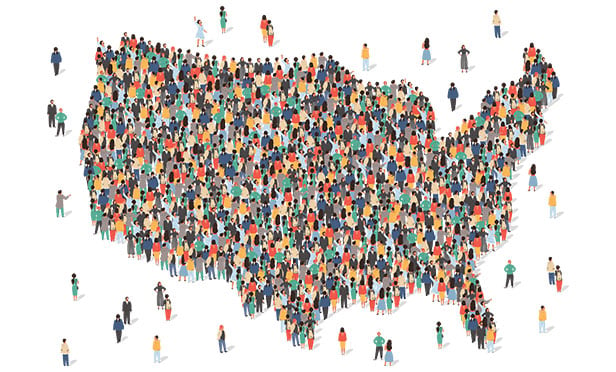The ability of workers to do their jobs from home during the COVID-19 pandemic is linked more to differences in earnings, education and gender than to age, according to a new analysis by the Center for Retirement Research at Boston University.
The brief, titled "Can Older Workers Work From Home," found that roughly the same percentage of older Americans and young adults are able to work from home, as most workplaces across the country have been forced to close their doors as a result of the novel coronavirus' spread.
"The results by age suggest that older workers are as well situated as younger workers," researchers said in a six-page paper published this month. "If anything, the percentage with potential 'work-from-home' jobs increases slightly with age, even if focusing only on workers 25 and over."
Work-from-home capabilities, however, do depend on workers' level of education, which is "highly correlated" to salary and earnings, the analysis found, in a pattern that exists across all age groups.
Women also tend to work in occupations that are more suited to remote work, a finding that researchers attributed to data showing that women are more likely to work in jobs that provide increased flexibility. Those jobs, however, can often be part-time positions or do not require working year-round, the analysis said.
On the other, contractors and freelancers may also be among the first to be laid off, which could explain why the unemployment rate for women is currently higher than for men, the researchers said.
The analysis, which looked to the findings of a recent study by the National Bureau of Economic Research and data from the Annual Social and Economic Supplement of the Current Population Survey, found that overall only 37 percent of U.S. jobs can be done entirely at home, and those positions account for about 46% of all wages.
A different process for analysing the data showed a slightly higher percentage–41%–of workers in occupations where working from home was a possibility, but the "story is basically unchanged," the Center for Retirement Research said.
For the low-paid workers who are less likely to be able to work remotely, the reopening of the U.S. economy could spell financial difficulties or the possibility of increased health risks if they return to work before the virus is finally brought under control, the analysis said.
"If one's starting assumption was that older workers were less likely to work in occupations that can be done remotely, then the findings by age are indeed good news," the analysis concluded. "On the other hand, the fact that about 55% of older workers cannot work remotely means that many may face re-entering what they view as unsafe work environments."
READ MORE:
© 2025 ALM Global, LLC, All Rights Reserved. Request academic re-use from www.copyright.com. All other uses, submit a request to [email protected]. For more information visit Asset & Logo Licensing.








